
Heteropodatoxins are peptide toxins from the venom of the giant crab spider Heteropoda venatoria , which block Kv4.2 voltage-gated potassium channels.

Heteropodatoxins are peptide toxins from the venom of the giant crab spider Heteropoda venatoria , which block Kv4.2 voltage-gated potassium channels.
Heteropodatoxins are purified from the venom of the giant crab spider, Heteropoda venatoria. [2]
Heteropodatoxins contain an Inhibitor Cystine Knot (ICK) motif, which consist of a compact disulfide-bonded core, from which four loops emerge. [1] There are three different heteropodatoxins: [2]
These three toxins are structurally similar peptides of 29-32 amino acids. [2] They show sequence similarity to Hanatoxins, which can be isolated from the venom of the Chilean rose tarantula Grammostola rosea. [2]
Heteropodatoxins block A-type, transient voltage-gated potassium channels. All three toxins have been shown to block the potassium channel Kv4.2. [2] Recombinant heteropodatoxin-2 blocks the potassium channels Kv4.1, Kv4.2 and Kv4.3, but not Kv1.4, Kv2.1, or Kv3.4. [3]
Heterpodatoxin-2 most likely acts as a gating modifier of the Kv4.2 channels. [3] It shifts the voltage dependence of the activation and the inactivation of the Kv4.3 potassium channel to more positive values. As a result, in the presence of the toxin this channel has a higher probability of being inactivated and a larger depolarization is needed to open the channel. However, heterpodatoxin-2 did not affect the voltage dependence of the Kv4.1 channel, suggesting that the precise mechanism of block remains to be elucidated, [3] and a role as a pore blocker cannot be excluded. [1] The voltage dependence of Kv4.2 block varies among the three different heteropodatoxins. It is less voltage dependent for HpTx1 than for HpTx2 or HpTx3. [2]
The giant crab spider can cause a locally painful bite. [4]
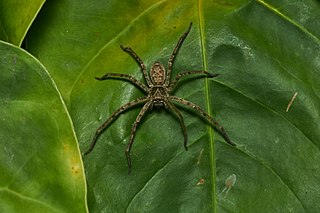
Heteropoda venatoria is a species of spider in the family Sparassidae, the huntsman spiders. It is native to the tropical regions of the world, and it is present in some subtropical areas as an introduced species. Its common names include giant crab spider, banana huntsman spider or cane spider.

Maurotoxin is a peptide toxin from the venom of the Tunisian chactoid scorpion Scorpio maurus palmatus, from which it was first isolated and from which the chemical gets its name. It acts by blocking several types of voltage-gated potassium channel.
Stromatoxin is a spider toxin that blocks certain delayed-rectifier and A-type voltage-gated potassium channels.
Hongotoxin (HgTX) is an ion channel toxin, which blocks Shaker-type (Kv1) K+ channels. The toxin is derived from the venom of Centruroides limbatus, a Central American scorpion found meanly in Costa Rica, Honduras and Panama.

Lq2 is a component of the venom of the scorpion Leiurus quinquestriatus. It blocks various potassium channels, among others the inward-rectifier potassium ion channel ROMK1.
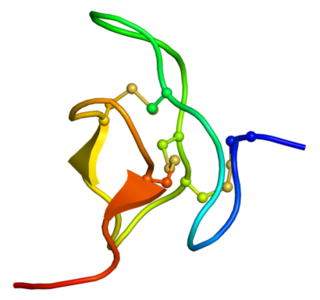
Phrixotoxins are peptide toxins derived from the venom of the Chilean copper tarantula Phrixotrichus auratus, also named Paraphysa scrofa. Phrixotoxin-1 and -2 block A-type voltage-gated potassium channels; phrixotoxin-3 blocks voltage-gated sodium channels. Similar toxins are found in other species, for instance the Chilean rose tarantula.
Jingzhaotoxin proteins are part of a venom secreted by Chilobrachys jingzhao, the Chinese tarantula. and act as neurotoxins. There are several subtypes of jingzhaotoxin, which differ in terms of channel selectivity and modification characteristics. All subspecies act as gating modifiers of sodium channels and/or, to a lesser extent, potassium channels.

Vanillotoxins are neurotoxins found in the venom of the tarantula Psalmopoeus cambridgei. They act as agonists for the transient receptor potential cation channel subfamily V member 1 (TRPV1), activating the pain sensory system. VaTx1 and 2 also act as antagonists for the Kv2-type voltage-gated potassium channel (Kv2), inducing paralytic behavior in small animals.

Guangxitoxin, also known as GxTX, is a peptide toxin found in the venom of the tarantula Plesiophrictus guangxiensis. It primarily inhibits outward voltage-gated Kv2.1 potassium channel currents, which are prominently expressed in pancreatic β-cells, thus increasing insulin secretion.
Hanatoxin is a toxin found in the venom of the Grammostola spatulata tarantula. The toxin is mostly known for inhibiting the activation of voltage-gated potassium channels, most specifically Kv4.2 and Kv2.1, by raising its activation threshold.
Theraphosa leblondi toxin (TLTx) is a toxin occurring in three different forms (subtypes) that are purified and sequenced from the venom of the giant tarantula Theraphosa blondi. This toxin selectively inhibits Kv4.2 voltage-gated potassium channels by acting as a gating modifier.

Pi3 toxin is a purified peptide derivative of the Pandinus imperator scorpion venom. It is a potent blocker of voltage-gated potassium channel, Kv1.3 and is closely related to another peptide found in the venom, Pi2.
Tamulotoxin is a venomous neurotoxin from the Indian Red Scorpion.
HsTx1 is a toxin from the venom of the scorpion Heterometrus spinifer. HsTx1 is a very potent inhibitor of the rat Kv1.3 voltage-gated potassium channel.
HgeTx1 (systematic name: α-KTx 6.14) is a toxin produced by the Mexican scorpion Hoffmanihadrurus gertschi that is a reversible blocker of the Shaker B K+-channel, a type of voltage-gated potassium channels.
AaTX1 is a scorpion toxin of the α-KTx15 subfamily originally found in the venom of Androctonus australis. The toxin acts as a specific blocker on Kv4.3 voltage-gated potassium channel, thereby abolishing the A-type potassium currents.
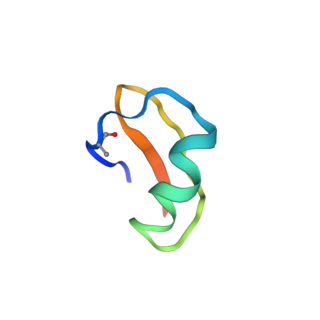
The Tst26 toxin is a voltage-gated potassium channel blocker present in the venom of Tityus stigmurus, a species of Brazilian scorpion. Tst26 selectively blocks Kv1.2 and Kv1.3 channels.
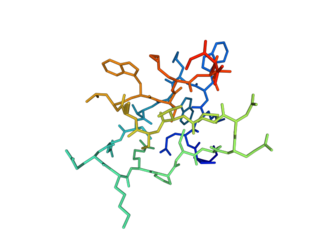
GiTx1 (β/κ-theraphotoxin-Gi1a) is a peptide toxin present in the venom of Grammostola iheringi. It reduces both inward and outward currents by blocking voltage-gated sodium and potassium channels, respectively.
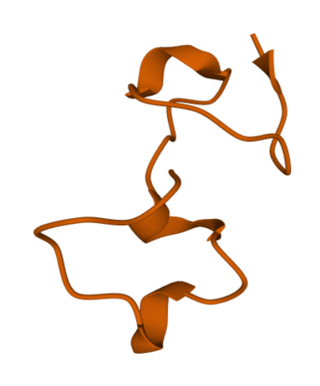
BcsTx3, also known as Kappa-actitoxin-Bsc4a, is a neurotoxin that blocks voltage-gated potassium channel (Kv1/KCNA). It is purified from the venom of Bunodosoma caissarum.
Protoxin-I, also known as ProTx-I, or Beta/omega-theraphotoxin-Tp1a, is a 35-amino-acid peptide neurotoxin extracted from the venom of the tarantula Thrixopelma pruriens. Protoxin-I belongs to the inhibitory cystine knot (ICK) family of peptide toxins, which have been known to potently inhibit voltage-gated ion channels. Protoxin-I selectively blocks low voltage threshold T-type calcium channels, voltage gated sodium channels and the nociceptor cation channel TRPA1. Due to its unique ability to bind to TRPA1, Protoxin-I has been implicated as a valuable pharmacological reagent with potential applications in clinical contexts with regards to pain and inflammation